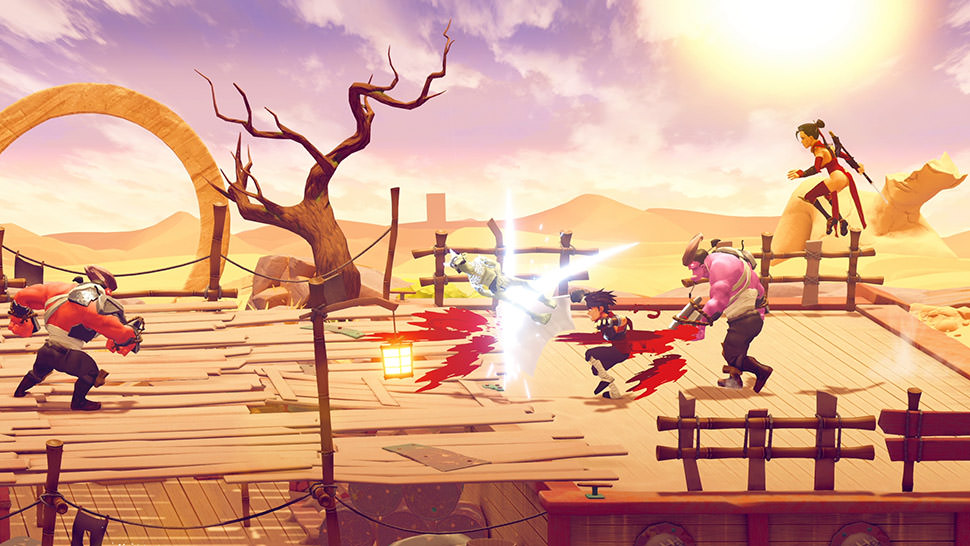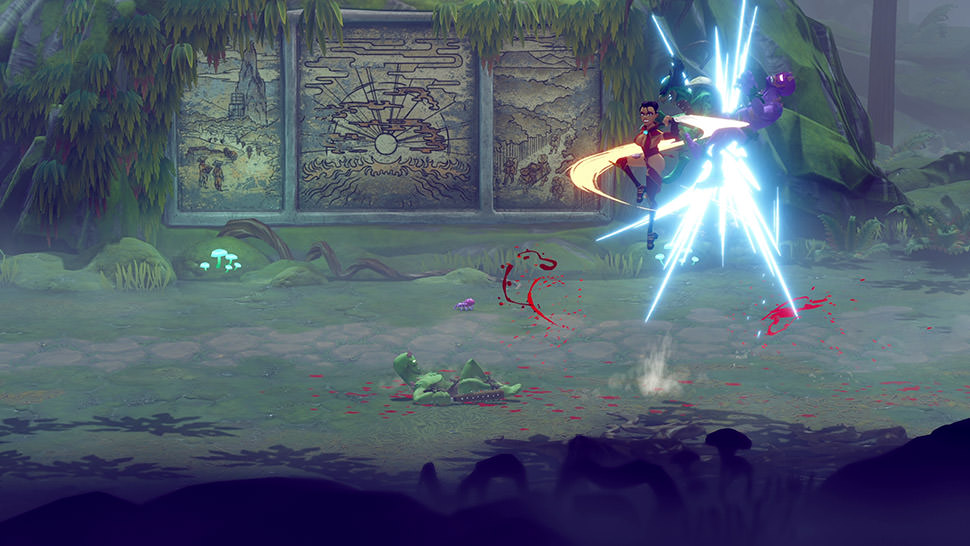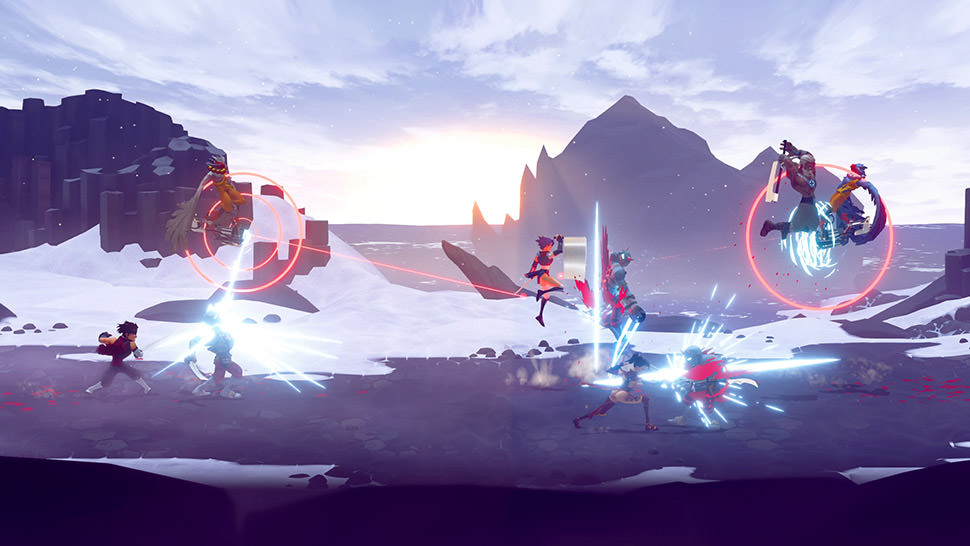Shing! Review

 By Kevin Mitchell | Sep 16, 2020
By Kevin Mitchell | Sep 16, 2020
Innovation is not always easy. The cooperative side-scrolling beat 'em up genre can trace its lineage back to the arcades during the '80s and '90s. Widely popular, the genre never really evolved even when ported to consoles. Instead, the genre changed on the surface only, featuring a rotation of licensed IPs that mainly played the same way. That doesn't mean the games were poorly received, as many are timeless classics; however, Shing! moves the genre forward in a way I wasn't expecting.

Shing! certainly looks like a traditional side-scrolling brawler. You move from left to right, cutting down foes and stringing combos together; however, one key difference gives life to a genre that has become stagnant. Forget having to memorize complicated or increasingly long strings of light and heavy attack combinations—Shing! utilizes the right analog stick for all primary weapon controls. Push, flick, and rotate your way to insane combos, air launchers, parries, counters, etc. I was skeptical at first, which I think is probably the reaction most will have before playing, but after completing the opening mission, I felt confident with the combat mechanics. Tilt the stick forward, and you'll swing your blade directly in front of you. Flick it multiple times to string combos together, and transition it upward for an aerial launcher. Heck, you can even block by holding it straight down (there is a menu option to let you define the stick's angle required to trigger a block), although a dedicated block button can be used. The addition of using angled flicks allows for the targeting of specific body parts, such as cleaving yōkai heads from their bodies by turning upward. It just feels more natural and satisfying than remembering, for example, hitting the light attack button three times and the heavy attack button once to trigger the launcher.

Shing! follows the tale of ninjas and warriors, venturing across the land slicing and dicing horned Japanese folklore monsters and spirits, known as yōkai. At first, the game feels like it would be set within the feudal period of Japanese history, but that goes out the window once lasers, massive robots, and snowboarding are introduced. The anime-inspired colorful art style works well with the narrative's light-hearted nature, complete with each character cracking jokes throughout. Without spoiling anything, make sure to pay attention to the tragic tale of everybody's favorite intern, Bob. Four playable characters mean you can swap on the fly to any of them, even mid-combo when playing alone. The game is best played with friends, as Shing! supports 4-player local co-op. Through Steam Remote Play and Nvidia GeForce Now on PC, and Share Play on PlayStation 4, the game can be experienced online, although it is not as smooth as having native online support. The developers have said they are looking to add proper online functionality into the game in a future update (at least on PC).

To acclimate to the new control scheme, I recommend playing on the lower difficulties, at least at first. I've already mentioned it, but I felt confident enough for a challenge after a single mission, especially if you plan to play cooperatively. The game adeptly introduces new enemy types, requiring you to alter your tactics, which all brawler-style games employ. All bosses aren't the damage-soaking tanks that you'd expect, as the game adds minor environmental puzzle elements into these battle sequences. Certain foes drop orbs of varying effects. Besides the typical replenishing of your health and energy, there are offensive buffs that deal out elemental powers, such as electricity or fire. A couple of yōkai require you to use these buffs to penetrate their shields, but using them on the cannon fodder enemies is satisfying to watch them explode into pools of blood. The seven levels in the game are quite long but do feature a generous checkpoint system, especially when you consider switching to any of the four characters at any point when playing single-player.
Simply Put
Shing! delivers a unique approach to the stagnant brawler genre but still has room for improvement. When a lot of yōkai are on-screen, I found myself wagging the right analog stick like a madman, attempting to handle so many foes at once. The whole point of advancing the genre is to avoid having to "mash buttons" or, in this case, "waggle." The additional challenges provide added value, and through great voice acting and funny dialogue, I cared about the characters by the time I finished the game.
Note: Shing! was reviewed on PlayStation 4. A digital copy of the game was provided by the publisher/developer.




